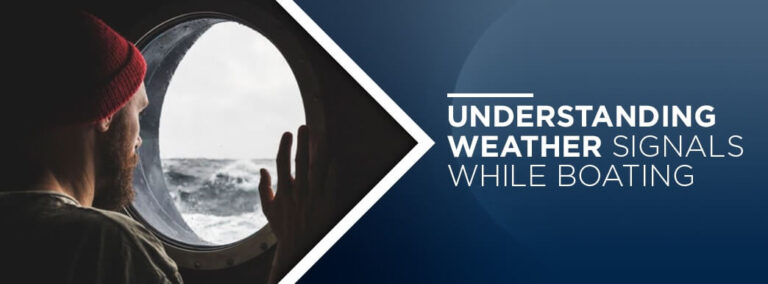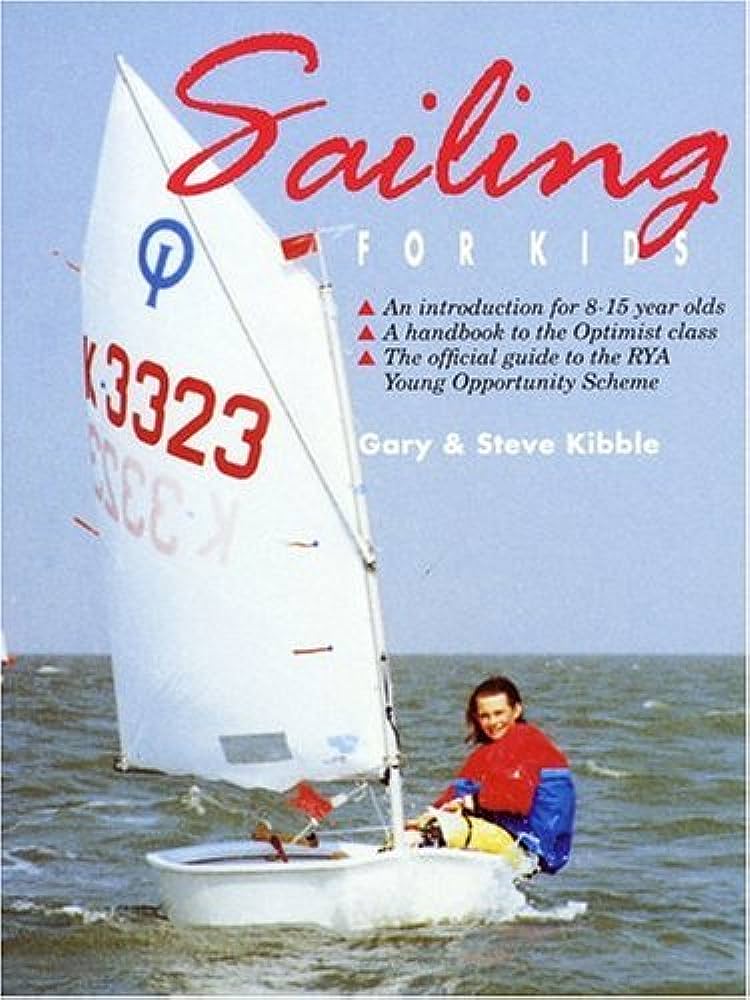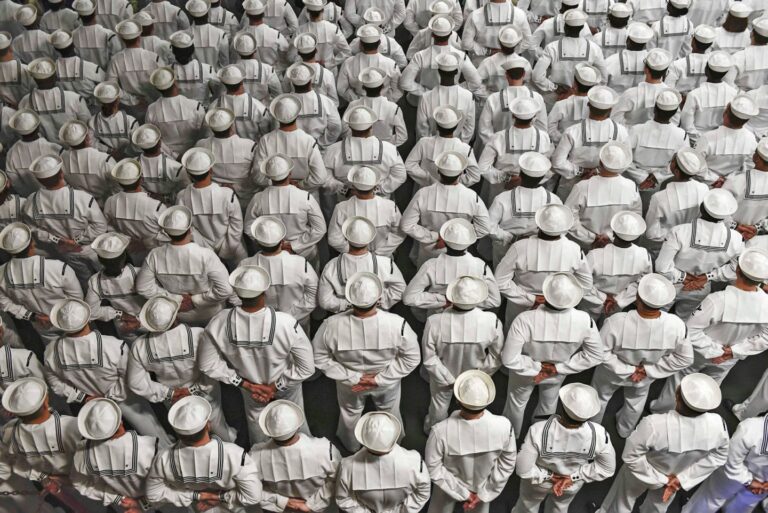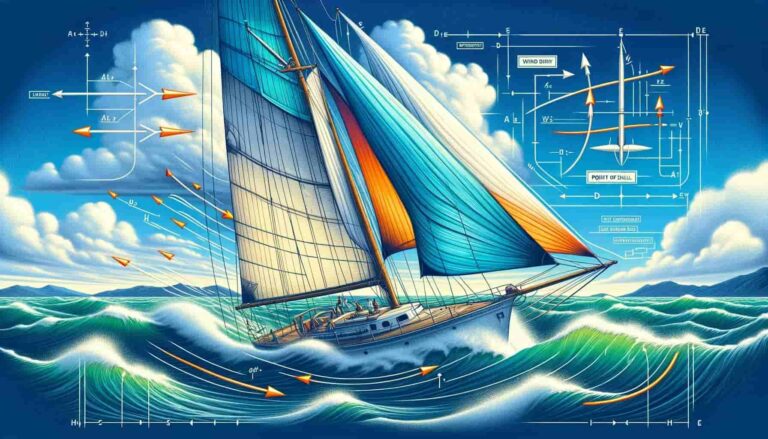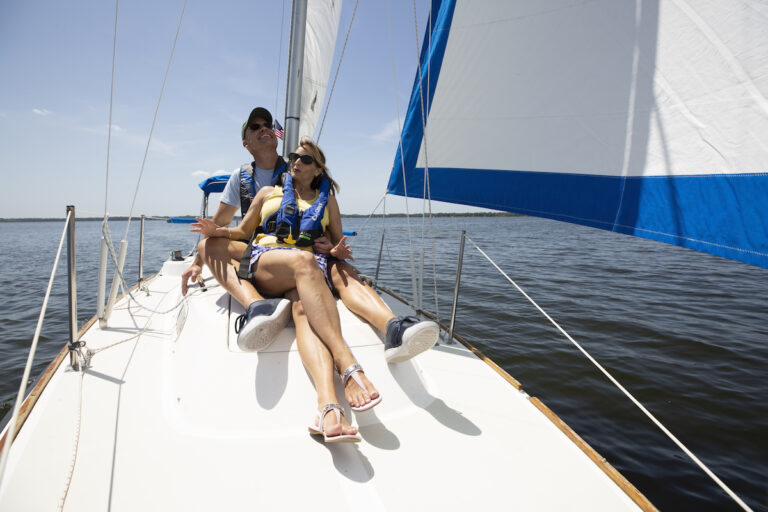Understanding Boat Anatomy: A Novice’S Guide
Understanding Boat Anatomy: A Novice’s Guide can help beginners grasp the basics of boat structure. In this comprehensive guide, we will explore the various components of a boat, from the hull to the deck, and everything in between.
By gaining a deeper understanding of boat anatomy, novice sailors can enhance their safety and enjoyment on the water. Whether you’re new to boating or simply curious about how boats are built, this guide will provide you with the essential knowledge you need to navigate the world of boat anatomy confidently.
So, let’s dive in and explore the fascinating world of boat construction.
A Brief Introduction To Boat Anatomy
Unravel the complex structure of boats with ‘Understanding Boat Anatomy: A Novice’s Guide’, an insightful introduction to the various components that make up a boat. Discover the fundamental elements and gain a deeper appreciation for this intricate machinery.
What Is Boat Anatomy?
Boat anatomy refers to the various components and structures that make up a boat. Understanding boat anatomy is essential for novice boaters as it allows them to navigate and operate their vessel safely and effectively. By familiarizing themselves with the different parts of a boat, beginners can gain confidence on the water and minimize the risk of accidents.
Below, we will explore the key components of boat anatomy:
Why Is Understanding Boat Anatomy Important For Novice Boaters?
Novice boaters may underestimate the importance of understanding boat anatomy, but it is crucial for several reasons:
- Safety: Knowing the different parts of a boat helps novice boaters navigate safely and respond to emergency situations effectively.
- Maintenance: Understanding boat anatomy enables boaters to perform basic maintenance tasks and identify potential issues before they escalate.
- Communication: When seeking assistance or discussing boating matters with others, having knowledge of boat anatomy allows for clear and effective communication.
- Navigation: Being familiar with boat anatomy aids in understanding navigation aids, buoy systems, and charts.
The Key Components Of A Boat:
The following are the key components of boat anatomy:
Hull:
- The hull is the main body of the boat, typically made of fiberglass, aluminum, or wood. It provides buoyancy and supports the entire vessel.
Deck:
- The deck is the top surface of the boat’s hull. It serves as the platform for walking, sitting, and carrying out various activities while on the water.
Bow, stern, and amidships:
- The bow refers to the front of the boat, while the stern is the rear. Amidships refers to the central section between the bow and stern. Understanding these terms helps navigate and communicate on the boat effectively.
Keel:
- The keel is a structural component at the bottom of the boat’s hull. It helps provide stability and prevents the boat from capsizing. In sailboats, the keel also helps with steering.
Rudder:
- The rudder is a movable component located at the stern of the boat. It controls the direction of the boat by redirecting the flow of water. In conjunction with the keel, it aids in steering the boat smoothly.
By familiarizing oneself with these key components, novice boaters can gain a foundational understanding of boat anatomy and start their boating journey with confidence. Remember, safe and enjoyable boating begins with a solid understanding of your vessel!

Credit: www.boats.com
Exploring The Different Types Of Boats
Discover the intricate workings of boat anatomy with this comprehensive beginner’s guide. Learn about the different types of boats and their unique features to enhance your understanding of these water vessels.
Sailboats
Sailboats are a popular choice for those who enjoy the thrill of harnessing the power of the wind. These elegant vessels come in various shapes and sizes, each designed to optimize performance in different conditions. Let’s explore the different components and features that make up the anatomy of a sailboat:
Rigging: Mast, Boom, And Sails
- Mast: A vertical spar that supports the sails and rigging.
- Boom: A horizontal spar that attaches to the mast and holds the foot of the mainsail.
- Sails: The main driving force of a sailboat, there are different types:
- Mainsail: The large sail attached to the mast and boom.
- Jib: A smaller sail at the front of the boat.
- Spinnaker: A specialized sail used for downwind sailing.
Keel And Centerboard
- Keel: A heavy fin-like structure located beneath the sailboat that provides stability and prevents drifting due to wind.
- Centerboard: An adjustable keel-like apparatus that can be raised or lowered to control the boat’s lateral resistance.
Powerboats
Powerboats, on the other hand, rely on engines for propulsion. They are designed to offer speed and maneuverability for various activities on the water. Let’s take a closer look at the anatomy of a powerboat:
Engine And Propulsion System
- Engine: The heart of a powerboat, it provides the necessary power for movement. Common types include inboard, outboard, and stern drive engines.
- Control systems:
- Throttle: A lever or control mechanism to adjust the speed of the boat.
- Steering wheel: Used to steer the boat in the desired direction.
- Trim tabs: Small adjustable plates attached to the hull, used to fine-tune the boat’s trim and stability.
Types Of Powerboats: Bowriders, Fishing Boats, And Pontoons
- Bowriders: Versatile and popular, bowriders have open bows and seating areas in the front, offering great socializing and recreational opportunities.
- Fishing boats: Designed with features like rod holders, live wells, and sturdy construction, fishing boats are ideal for anglers.
- Pontoons: Pontoons boats have a flat deck supported by floats, providing stability and ample space for various activities.
Whether you prefer the grace of a sailboat or the power and speed of a powerboat, understanding the anatomy and different types of boats will enhance your boating experience.
Understanding The Hull And Deck
Understanding the hull and deck is essential for novice boaters to grasp the basics of boat anatomy. With this guide, you’ll gain insights into these crucial components and their functions, setting you on the right path to becoming a knowledgeable sailor.
If you’re new to boating, understanding the various components of a boat can be overwhelming. One of the key areas to grasp is the hull and deck, as they play a crucial role in the performance and functionality of the vessel.
In this section, we’ll delve into the design and construction of hulls, the different materials used, and the layout of the deck.
Hull Design And Construction:
When it comes to hulls, two main types are typically seen: displacement hulls and planing hulls. Let’s take a closer look at each:
- Displacement hulls: These hulls are designed to displace water as the boat moves forward, creating a wave that travels along the length of the hull. They’re commonly found on sailboats and some larger powerboats. Displacement hulls are known for their stability and fuel efficiency, making them ideal for long-distance cruising.
- Planing hulls: Unlike displacement hulls, planing hulls are designed to lift out of the water as they gain speed. This reduces hull resistance and allows the boat to reach higher speeds. Planing hulls are commonly found on smaller powerboats and are preferred for watersports and recreational boating.
Various materials are used in hull construction. Here are the most common options:
- Fiberglass: Fiberglass hulls are popular due to their durability, low maintenance, and resistance to corrosion. They offer a good balance between strength and weight, making them suitable for a wide range of boat types.
- Aluminum: Aluminum hulls are lightweight yet sturdy, making them suitable for boats that require speed and maneuverability. They are resistant to corrosion and can withstand rough conditions, making them ideal for saltwater boating.
- Wooden: While less common in modern boat construction, wooden hulls have a classic charm. Wood provides excellent insulation and can be easily repaired, but it requires regular maintenance to prevent rot and decay.
The shape of the hull also affects a boat’s performance. Here are some key aspects to consider:
- Hull shape: The shape of the hull impacts how the boat handles different water conditions. V-hulls, for instance, are known for their stability and ability to cut through waves smoothly. Flat-bottomed hulls, on the other hand, provide better stability at rest and are commonly used in small fishing boats.
- Deadrise angle: The deadrise angle refers to the angle at which the hull’s bottom meets the water. Steeper deadrise angles allow for better performance in rough waters, as they help to soften the impact of waves. Shallower deadrise angles provide better stability in calm waters but may result in a rougher ride in choppy conditions.
Deck Layout:
Now that we’ve covered the hull, let’s move on to the deck and its layout. An efficient deck design enhances the usability and enjoyment of the boat. Here are the key areas to consider:
- Cockpit area: The cockpit is the central area of the deck where the helm station, seating, and storage are located. It serves as the command center of the boat. Some important components within the cockpit area include:
- Helm station: This is where the boat’s controls and steering are located, allowing the captain to navigate and control the boat’s movements.
- Seating: Comfortable seating options are essential for passengers to relax and enjoy the ride. Different types of seating configurations can be found depending on the boat’s size and purpose.
- Storage: Ample storage compartments are required for stowing gear, life jackets, and other essentials. Built-in storage options such as lockers and under-seat compartments are common in deck designs.
- Bow area: Moving towards the front of the boat, you’ll find the bow area. Some notable features typically present in this area include:
- Anchor locker: This is where the anchor and anchor line are stored when not in use. An anchor locker keeps the deck organized and helps prevent damage caused by loose equipment.
- Cleats: Cleats are used for attaching ropes and lines to secure the boat when docking or anchoring. They ensure the boat remains in place, even in challenging weather conditions.
- Navigation lights: Properly positioned navigation lights allow boaters to safely navigate in darkness or low-visibility conditions. These lights are typically found on the bow and stern of the boat.
- Transom area: Finally, the transom area is located at the back of the boat. It includes features such as:
- Swim platform: This platform provides a stable area for swimmers to enter and exit the water. It also offers a convenient place to store water toys or fishing equipment.
- Boarding ladder: The boarding ladder is typically attached to the swim platform, allowing easy access to the boat from the water. It can be folded or deployed when needed.
Understanding the hull and deck of a boat is essential for any novice boater. By familiarizing yourself with the various design elements and their functions, you’ll be well-equipped to choose the right boat for your needs and enjoy a safe and enjoyable boating experience.
Navigating The Bow, Stern, And Amidships
Understanding boat anatomy can be a challenge for beginners. This guide helps you navigate the bow, stern, and amidships, providing a clear understanding of the different parts of a boat.
—————————————–
When it comes to understanding the anatomy of a boat, knowing your way around the different sections is essential. In this guide, we’ll focus on the bow, stern, and amidships, providing you with a detailed overview of each area. So hop on board as we take you through the fascinating features of these boat parts.
The Bow:
The bow is the front part of the boat and plays a crucial role in navigation and anchoring. Let’s explore its key components:
- Bow rail and cleats: The bow rail provides safety and stability, allowing you to move around the boat with ease. Cleats, on the other hand, are metal or plastic fittings used for securing ropes and lines.
- Anchor system: The anchor system is essential for keeping the boat in place, especially when you want to stop and explore or fish. It consists of three main components:
- Windlass: This mechanical device is used to raise and lower the anchor effortlessly. It saves you from manually pulling up heavy anchors, making anchoring a breeze.
- Anchor: The anchor itself is a heavy metal object designed to dig into the sea or riverbed, preventing the boat from drifting away.
- Rode: The rode is the combination of rope and chain that connects the anchor to the boat. It ensures a secure connection and helps control the anchor’s depth.
- Bow pulpit and roller: The bow pulpit is a railing structure at the front of the boat, providing safety and support. The roller, usually attached to the bow pulpit, guides the anchor and rode, preventing tangles and snags.
The Stern:
Moving towards the back of the boat, we find the stern. Here are the key elements you need to know:
- Transom: The transom is the flat or curved surface at the rear of the boat. It is designed to support the outboard motor or sterndrive, allowing for propulsion and steering.
- Swim platform and boarding ladder: The swim platform provides easy access to the water, making it convenient for swimming, snorkeling, or boarding from a dinghy. The boarding ladder facilitates safe entry and exit from the water.
- Stern rail and cleats: Similar to the bow rail, the stern rail provides additional safety and support at the back of the boat. Cleats are also present here for securing ropes and lines.
Amidships:
Finally, let’s explore the amidships area, which refers to the middle section of the boat:
- Side decks and handrails: The side decks are walkways that run alongside the boat, allowing for easy movement from bow to stern. Handrails are essential for support and stability while navigating these areas.
- Windows and ports: Windows and ports provide natural light and ventilation inside the boat’s cabin. They also offer a view of the surroundings, enhancing the overall boating experience.
- Ventilation systems: Proper airflow is essential to eliminate odors and maintain a comfortable atmosphere onboard. Ventilation systems, such as vents and fans, ensure fresh air circulation within the cabin.
Now that you’re familiar with the bow, stern, and amidships of a boat, you can confidently navigate these areas and appreciate the intricate design and functionality they offer. So dive in and explore the wonders of boating from every corner of your vessel.
The Role Of The Keel And Rudder
The keel and rudder play vital roles in a boat’s anatomy. Acting as stabilizers, the keel keeps the boat steady, while the rudder controls its direction. Understanding these components is essential for navigating the waters as a novice boat enthusiast.
Boats are fascinating vessels that require an understanding of their various components. Among these components are the keel and rudder, two essential parts that play crucial roles in a boat’s stability, tracking, and maneuverability. In this section, we will delve into the function of the keel and rudder, exploring different types of keels and rudder designs, as well as the steering mechanisms commonly used.
So, let’s get started!
Understanding The Keel:
The keel is an elongated structure that extends from the bottom of the boat’s hull. It serves several purposes, with stability being one of its primary functions. Some key points about the keel include:
- The keel helps counteract the force of the wind on the sails, preventing the boat from tipping over.
- It provides resistance against sideways motion (lateral resistance), enabling the boat to maintain a straight course while sailing.
Types of keels: full, fin, and winged keels:
- Full keel: This type of keel runs along the entire length of the boat, providing excellent stability. It is commonly found in traditional sailboats.
- Fin keel: A fin keel is a narrow, deep keel that offers less resistance in the water, allowing the boat to move more quickly. This type is often seen in modern sailboats.
- Winged keel: A winged keel incorporates horizontal extensions that resemble wings. It further enhances stability and reduces drag, enabling faster speeds.
Keel’s function in stability and tracking:
- The keel helps prevent the boat from capsizing by keeping its center of gravity low and resisting the force of the wind.
- It acts as a hydrodynamic wing, creating lift against the sideways motion, and keeping the boat on course.
The Rudder:
The rudder is a movable component attached to the stern (back) of the boat. Its primary function is to control the boat’s direction. Let’s explore some details about the rudder:
Rudder design and position:
- The shape and size of the rudder vary depending on the boat’s size and purpose. Larger boats tend to have larger rudders.
- The rudder is positioned below the waterline, allowing it to resist the flow of water and generate steering forces.
Steering mechanisms: tiller and wheel:
- Tiller: A tiller is a lever attached to the rudder and operated directly by the sailor’s hand. It provides a direct connection to the boat’s steering, offering a tactile feel for the changing winds and currents.
- Wheel: The wheel mechanism is commonly found in larger boats and offers a mechanical advantage by allowing the sailor to steer with minimal effort.
The role of the rudder in maneuverability:
- The rudder enables the boat to make turns, change direction, and maneuver through narrow passages.
- It acts as a control surface, manipulating the force of the water flowing past it to redirect the boat’s path.
Understanding the keel and rudder is essential for any novice sailor or boat enthusiast. Now that we have explored their functions and variations, you have gained valuable insights into these crucial components.
Maintaining And Troubleshooting Boat Anatomy
This guide provides a beginner-friendly approach to understanding and maintaining boat anatomy, including troubleshooting tips. Gain the knowledge needed to keep your boat in top shape and ensure smooth sailing on the water.
Essential Maintenance Tips For Boat Owners:
- Cleaning and protecting the hull and deck: Proper cleaning and maintenance of the hull and deck are essential for a boat’s longevity and performance. Here are some tips to keep in mind:
- Regularly clean the hull to remove any dirt, grime, or marine growth using a suitable boat cleaner.
- Inspect the hull for any signs of damage, such as cracks or blisters. Address these issues promptly to prevent further deterioration.
- Apply a protective wax or coating to the hull to shield it from the damaging effects of UV rays and saltwater.
- Clean and treat the deck regularly to prevent the buildup of dirt, mold, or mildew, using appropriate cleaning solutions to ensure the integrity of the materials.
- Inspecting and maintaining rigging and sails: The rigging and sails play a crucial role in the boat’s performance and safety. Here’s how to maintain them effectively:
- Check the rigging regularly for wear, corrosion, or loose fittings. Replace any worn-out components promptly.
- Inspect the sails for tears, fraying, or UV damage. Repair or replace damaged sections to maintain optimal sail performance.
- Lubricate the sail track and roller furling mechanism to ensure smooth operation.
- Store sails properly when not in use, protecting them from moisture and UV exposure.
- Checking and lubricating control systems: The control systems of a boat, including the steering and throttle mechanisms, require regular inspection and lubrication. Follow these tips:
- Regularly inspect the steering system for any loose connections, excessive play, or signs of wear. Address these issues immediately for safe and effective steering.
- Lubricate the steering system as recommended by the manufacturer using appropriate marine lubricants.
- Check the throttle and shift controls for smooth operation, without any stiffness or resistance. Lubricate the control cables if necessary.
- Inspect other control systems, such as trim tabs and bilge pumps, ensuring their functionality and proper lubrication.
Troubleshooting Common Boat Anatomy Issues:
- Leaks and hull integrity: Boat owners may encounter leaks or hull integrity issues, which need to be addressed promptly to avoid further damage. Here are some troubleshooting tips:
- Regularly inspect the hull for any signs of moisture or water intrusion. Look for discoloration, soft spots, or water accumulation.
- Identify the source of the leak by tracing the path of water. Common areas prone to leaks include through-hulls, fittings, and hull penetrations.
- Repair any leaks using appropriate marine sealants or epoxy, ensuring a watertight seal.
- Consider installing a bilge pump and maintaining it regularly to remove any water accumulation.
- Engine and propulsion system problems: Engine and propulsion system issues can hamper a boat’s performance and safety. Consider the following troubleshooting steps:
- Regularly inspect the engine for any signs of oil or coolant leaks. Address these issues promptly and ensure proper fluid levels.
- Listen for any unusual engine noises or vibrations, which could indicate underlying problems. Seek professional assistance if needed.
- Keep the fuel system clean by regularly changing fuel filters and using fuel additives to prevent clogs or fuel contamination.
- Maintain the propeller by removing any debris or fouling and ensuring it is properly aligned.
- Steering and navigation equipment malfunctions: Steering and navigation equipment failures can compromise the safety and maneuverability of a boat. Take these troubleshooting measures:
- Regularly check the steering system for proper alignment and operation. Address any stiffness or resistance.
- Inspect navigation lights, ensuring they function correctly and meet the required visibility standards.
- Calibrate and test electronic navigation equipment, such as GPS and chartplotters, to ensure accurate and reliable performance.
- Keep spare parts and tools on board in case of emergency repairs.
Remember that maintenance and troubleshooting are essential for the smooth operation and safety of your boat. Regular inspections, prompt repairs, and proper lubrication will help you enjoy many worry-free hours on the water.
Frequently Asked Questions For Understanding Boat Anatomy: A Novice’S Guide
What Are 5 Basic Parts Of A Ship?
The five basic parts of a ship are hull, deck, superstructure, propulsion system, and navigation equipment.
What Is A Bedroom Called On A Boat?
A bedroom on a boat is called a cabin.
What Are The 4 Sides Of A Boat Called?
The four sides of a boat are called the bow, stern, port, and starboard.
What Do You Call The Guide For The Boat?
A guide for a boat is called a boat guide.
Conclusion
Understanding boat anatomy is crucial for novice boaters who want to navigate the water with confidence and safety. By exploring the different parts of a boat, such as the hull, deck, and rigging, beginners can gain a deeper understanding of how these components work together.
This knowledge not only enhances their boating experience but also enables them to better communicate with experienced boaters and understand maintenance and repair requirements. Furthermore, comprehending boat anatomy helps novices make informed decisions about the type of boat that suits their needs, whether they prioritize speed, stability, or storage capacity.
With a solid understanding of boat anatomy, novices can embark on their boating journeys with peace of mind, knowing that they have a strong foundation of knowledge and can navigate the waterways confidently. So, start exploring boat anatomy today and unlock the endless possibilities of the boating world!



